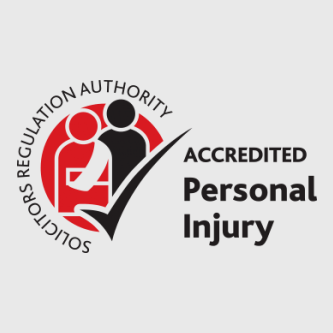‘Liam’ – Spinal injury sustained in surgery
Settlement achieved: A seven figure sum
Case handler: Christopher Lecky (Senior Solicitor)
Case background
In this case, our client attended hospital for routine spinal surgery to replace a disc in their spine.
After the first operation, they were initially rendered tetraplegic. Urgent follow up surgery was undertaken to attempt to revise the initial surgery but with only limited success. Our client was permanently rendered paraplegic.
Features of our client’s case
This proved to be a very challenging case in which the Defendant NHS Trust made no concessions at any point with regard to whether they were at fault for the outcome. They were also resistant to engaging in the case in any meaningful or constructive manner.
Despite this intransigent approach, extensive expert evidence was obtained for our client and we continued to fight her case.
The issue of liability (i.e. to determine if the Defendant NHS Trust was at fault) was ultimately resolved favourably at a formal mediation, only a few weeks before a trial on the issue of liability.
Thereafter, substantial interim damages were secured for our client and the case proceeded again until just a few weeks before another trial to determine the value of our client’s case, before a resolution was obtained at a settlement meeting between the parties.
Why Serious Law was one of a select handful of firms uniquely able to handle the matter
With liability and the overall value of the case being contested throughout the entirety of the case, it was vital that the our client had instructed a firm with significant experience in handling cases of such complexity and with access to a range of specialist experts who could provide the necessary evidence.
The file handler, Chris Lecky, had first hand experience in successfully resolving another case involving almost identical injuries arising from the same type of surgery and, this knowledge was key to understanding the complexities of the liability issues, communicating effectively with the experts involved and arguing the client’s case to a successful conclusion.
The settlement
The parties engaged in a full day of negotiations at a settlement meeting, arranged just 8 weeks before the commencement of a 10-day trial.
The settlement meeting ultimately failed on the day but, with reliance and skilled further negotiations, a successful settlement was reached securing our client a multi-million pound figure to fund her future care and additional needs arising from her injuries.
If you or someone you know has sustained a serious injury and would like to speak to a serious injury specialist, please contact us today.
In this case our client sustained a serious back injury as a result of a workplace accident.
The incident occurred when our client tripped over an empty box left behind him, without his knowledge, causing him to fall to the floor and suffer the following injuries and medical treatment:
- a soft tissue injury to his lumbar spine which was already the subject of degenerative changes;
- an L3 laminectomy (a surgical operation to remove the back of one or more vertebrae, usually to give access to the spinal cord or to relieve pressure on nerves) and bilateral L3/4 decompressions (a type of surgery used to treat compressed nerves in the lower (lumbar) spine) associated with a right-sided microdiscectomy (a surgical procedure to relieve the pressure on a spinal nerve root by removing the material causing the pain);
- lumbar spine fusion between vertebra L3 & L5.
Where our specialist serious injury experience really added value to our client’s situation
Upon instruction and after gathering all the relevant background information, we sent a Letter of Claim to our client’s employer. We received an e-mail response from the public liability insurer on behalf of the Defendant advising that they were making enquiries into the matter.
We subsequently received an e-mail from the Defendant’s solicitors (Defendant) advising that they were instructed to act on behalf of their client and followed up by making a conditional offer to settle our client’s claim before medical evidence had been obtained.
Following close consideration of the offer, we advised the Defendant that their offer was rejected and asked for an admission of liability.
Liability was admitted by the Defendant, subject to contributory negligence and they requested medical evidence, full medical records and details of our client’s losses.
We then arranged a meeting with a barrister (counsel) to discuss our client’s case and to discuss next steps.
In order to protect our client’s position, we issued legal proceedings but did not serve them immediately upon the Defendant.
The Defendant asked for full disclosure of all relevant documents in order that they could investigate whether contributory negligence should be attached to our client.
We then instructed a Neurosurgeon to examine our client and to provide a report detailing his injuries and future prognosis. The expert’s report was later received and requested sight of MRI scans taken of our client’s spine in the past so that he could comment upon the estimated period of acceleration of our client’s symptoms as a result of the accident.
We then prepared draft witness statements from various contacts of our client such as his wife, and other family members.
The legal proceedings were then formally served upon the Defendant which they acknowledged followed by a formal Defence and Counter Schedule of Loss. The Defence accepted liability for the accident but alleged contributory negligence on our client’s part.
The Defendants then requested various documents to support our client’s claim.
Various complex court procedural matters were then completed and finally witness evidence was exchanged between the parties.
Our client then attended a medical appointment with the Defendant’s medical expert.
Following completion of our client’s medical evidence, this was then disclosed to the Defendant which was passed to their medical expert for him to comment.
Various further court procedural matters were handled along with attempts to complete our medical evidence after receiving the Defendant’s medical report.
An Updated Schedule of Loss was then prepared and sent to our Claimant for their consideration and agreement. Following instructions and further amendments, our client’s Updated Schedule of Loss was served on the Defendant’s Solicitors.
Following a meeting with counsel, instructions were sent to our medical expert asking him to contact the Defendant’s expert to prepare a Joint Statement detailing areas where they agreed and disagreed.
The Defendant then served the addendum report of their medical expert following his review of the previous MRI Scan (post-accident) of our client’s lumbar spine. The Defendant’s expert was of the opinion that the MRI scan showed deterioration and degenerative changes that did not relate to our client’s accident. A copy of the addendum report was sent to our medical expert for his consideration and response.
Reaching settlement
Following further court procedural steps being taken, the Defendant made a time limited offer to settle our client’s claim for a five figure sum. Following some further consideration, our client decided to accept thus reaching a full and final settlement of his claim.
If you or someone you know would like to speak to our serious injury specialist about a workplace accident, please contact us today.









